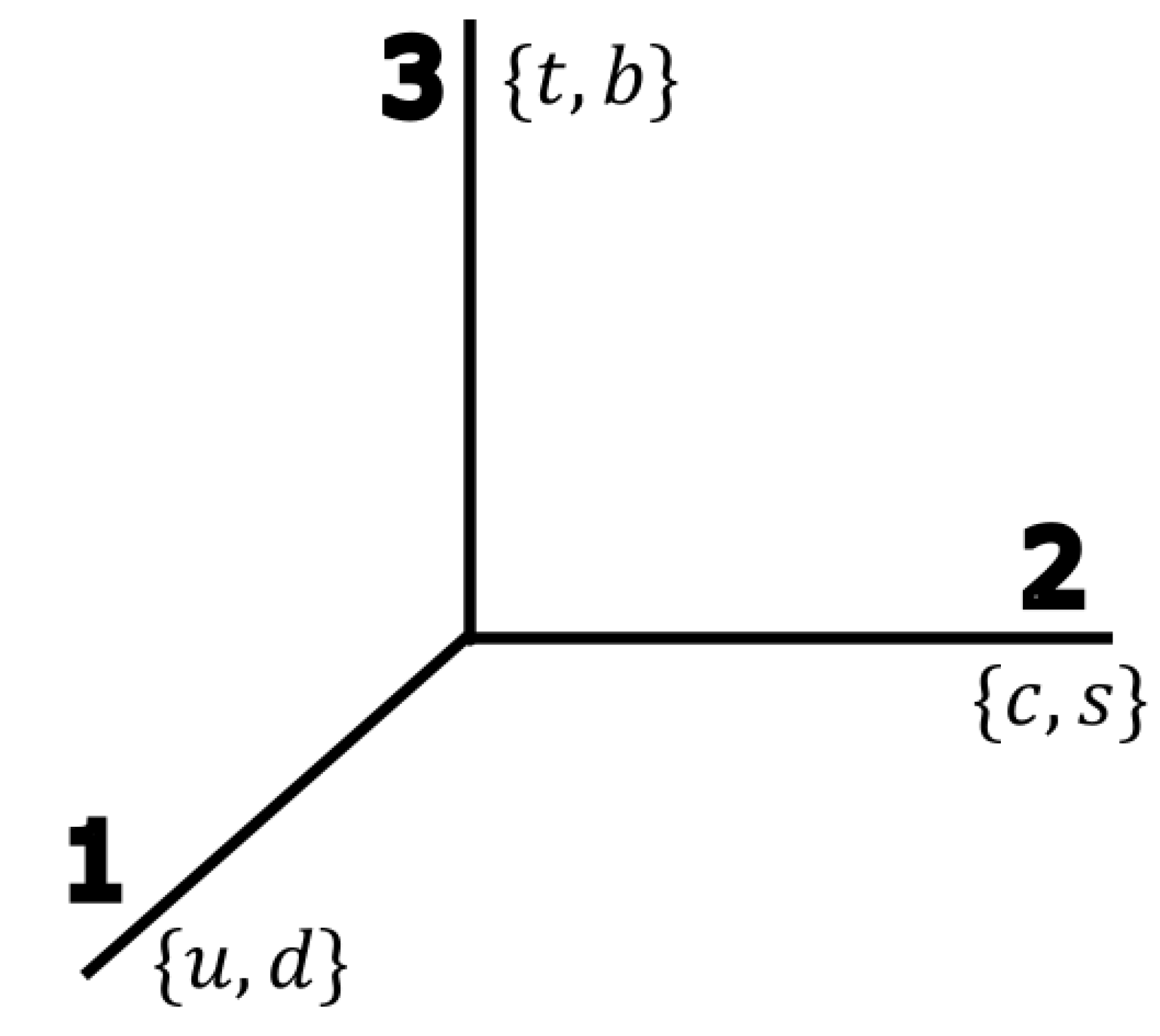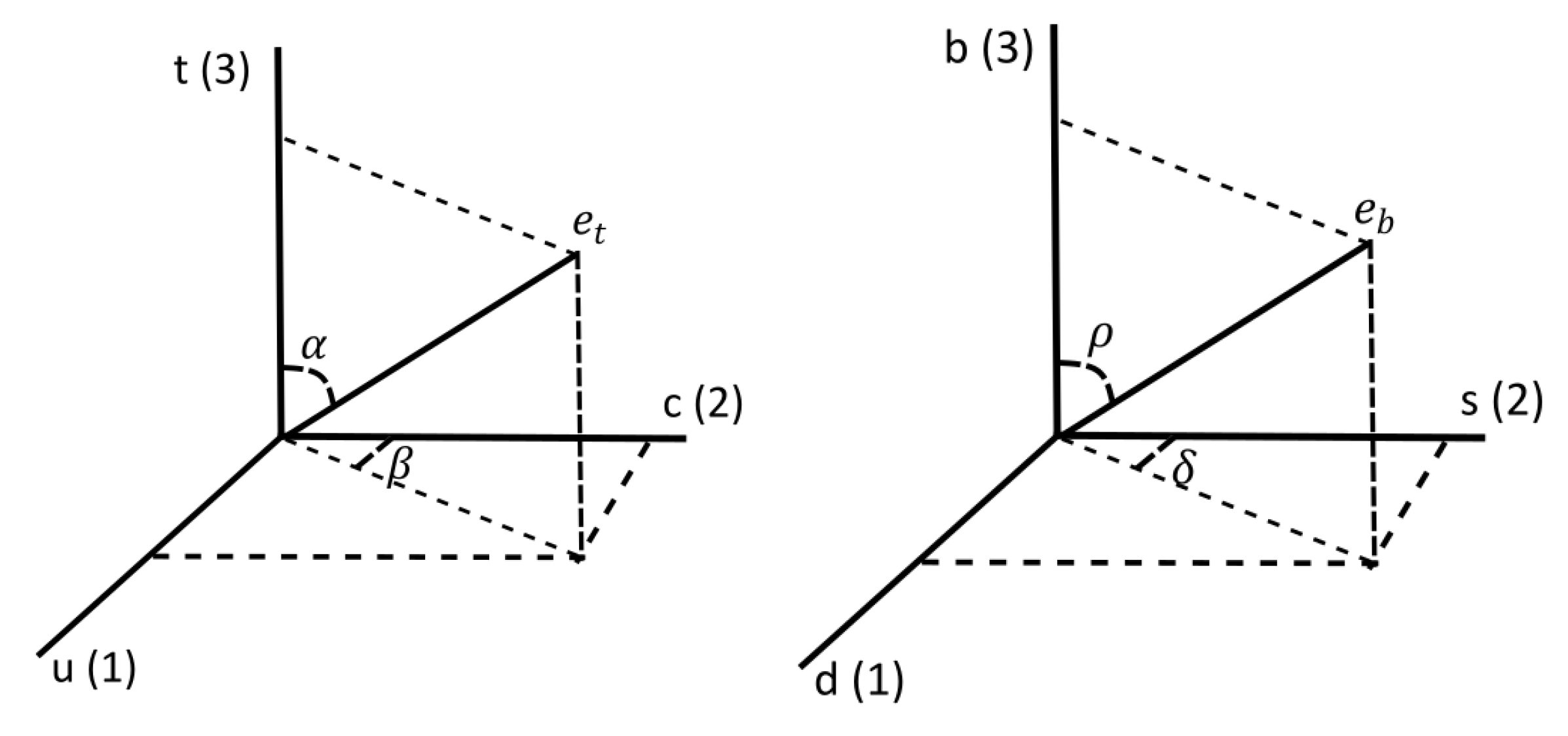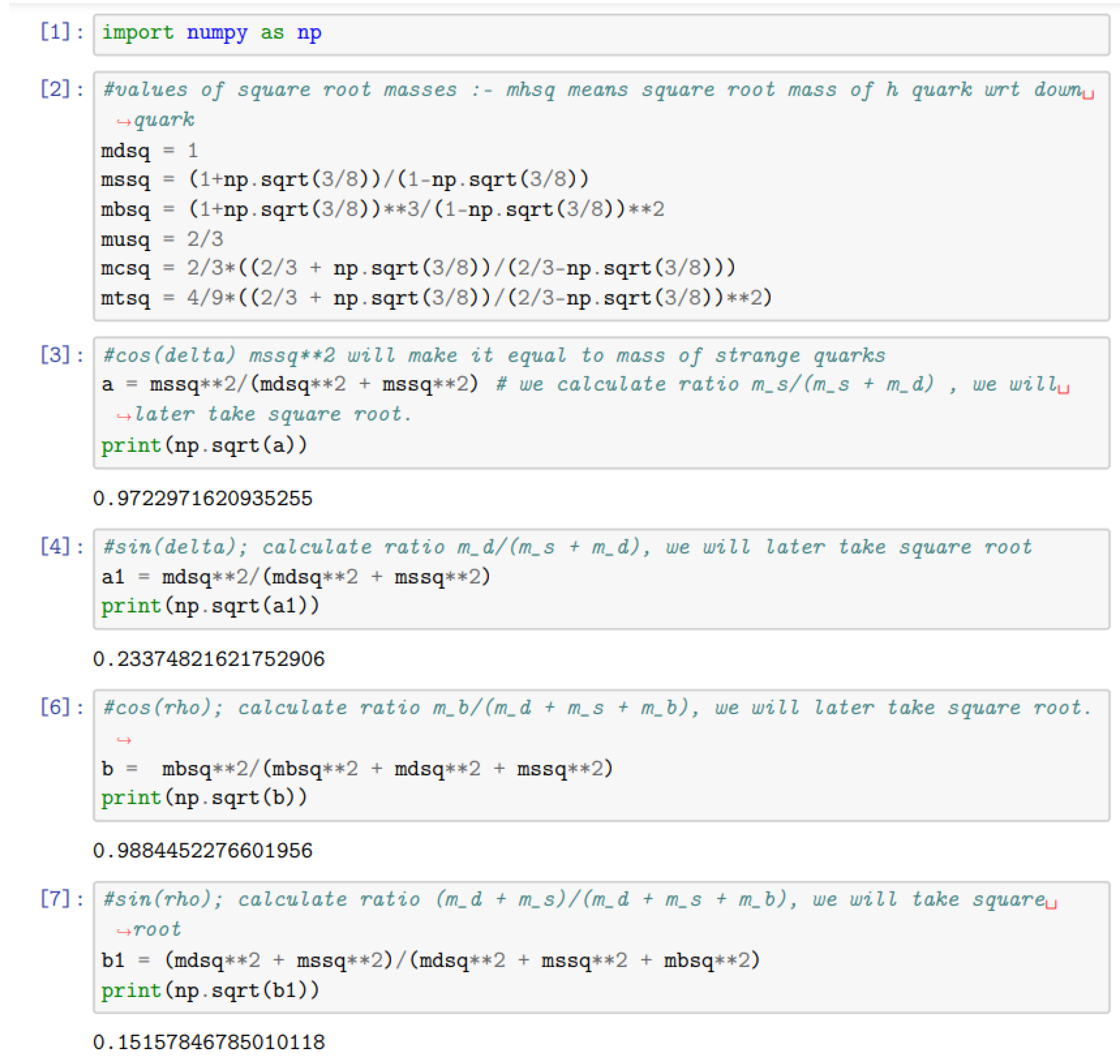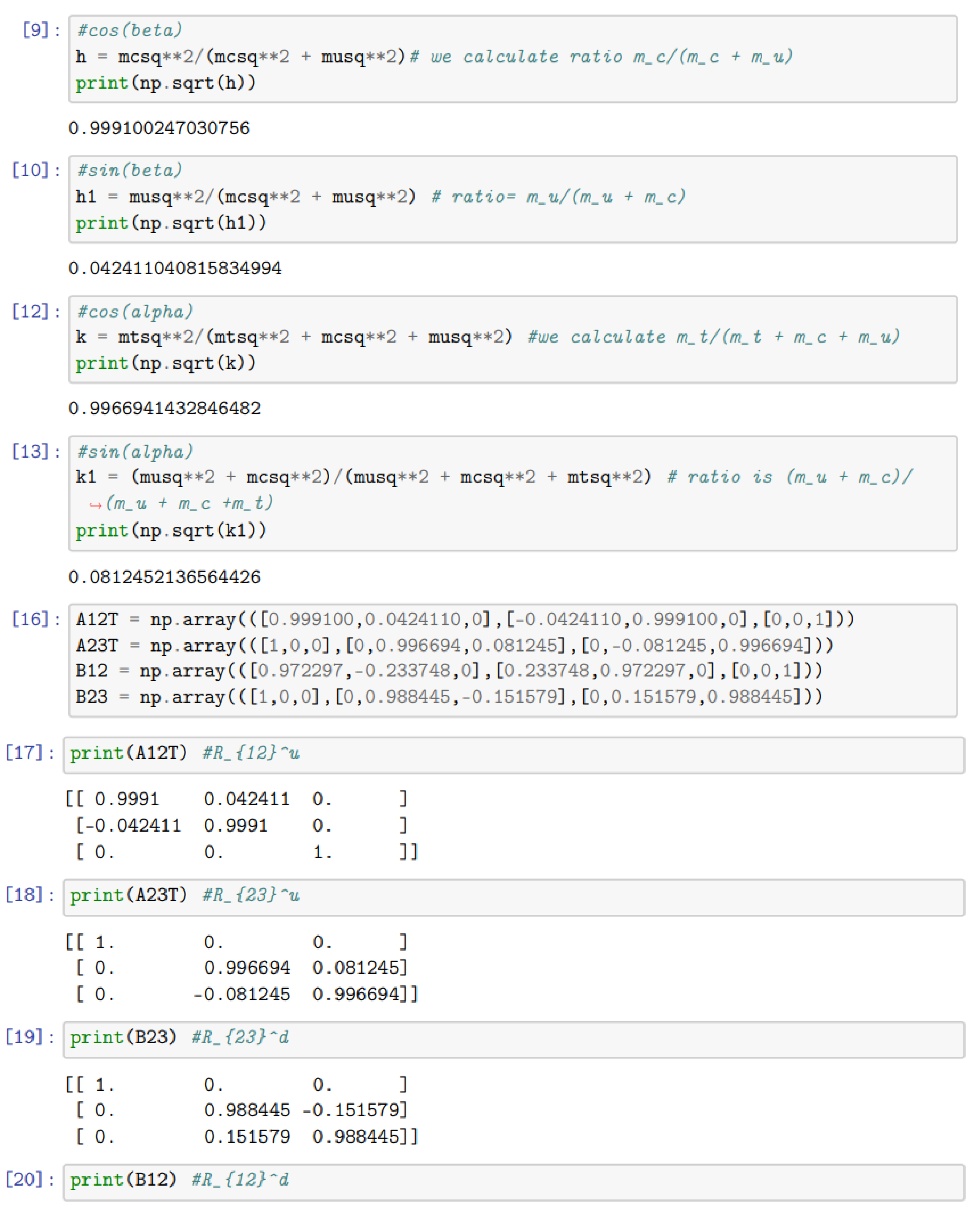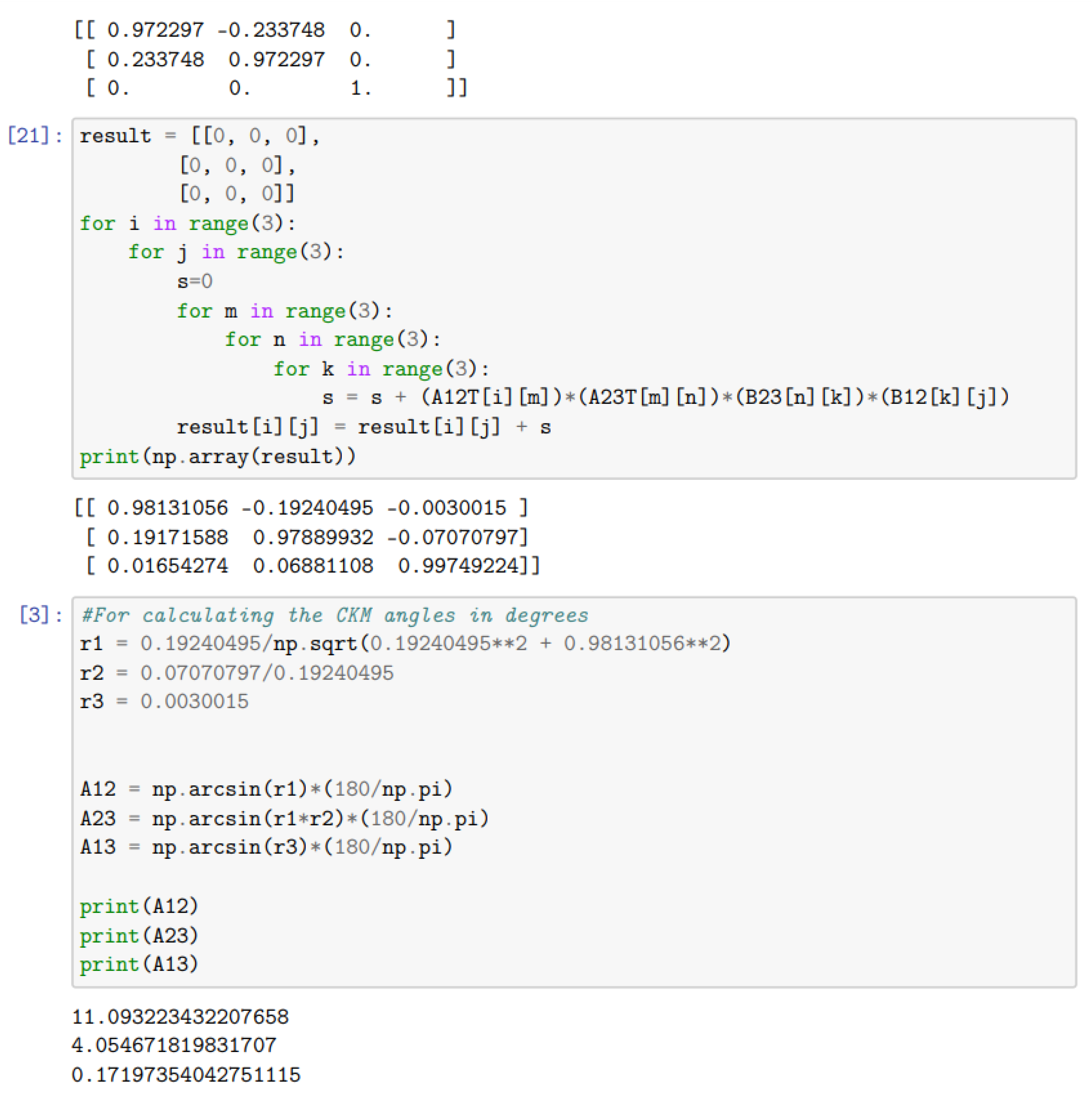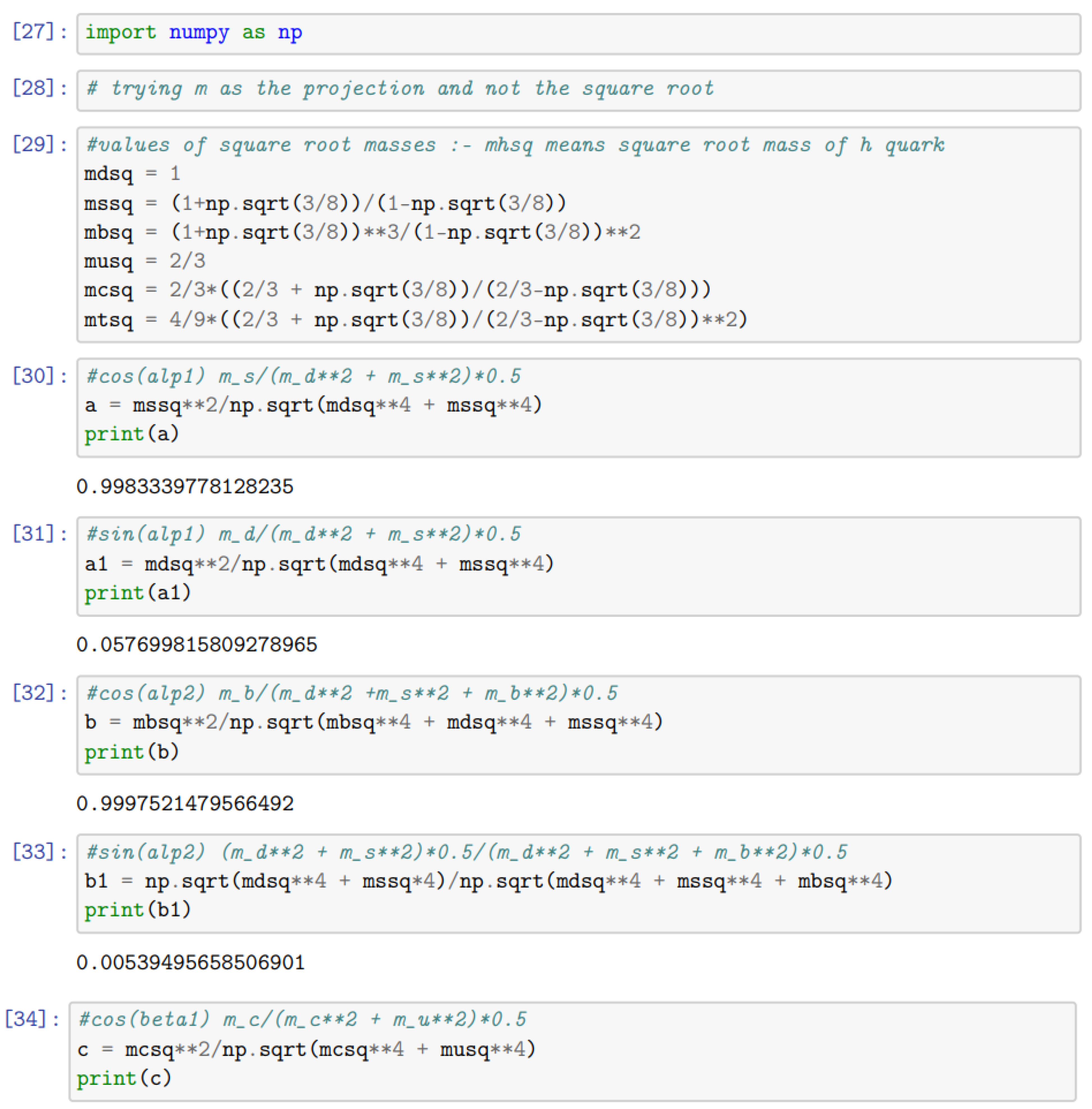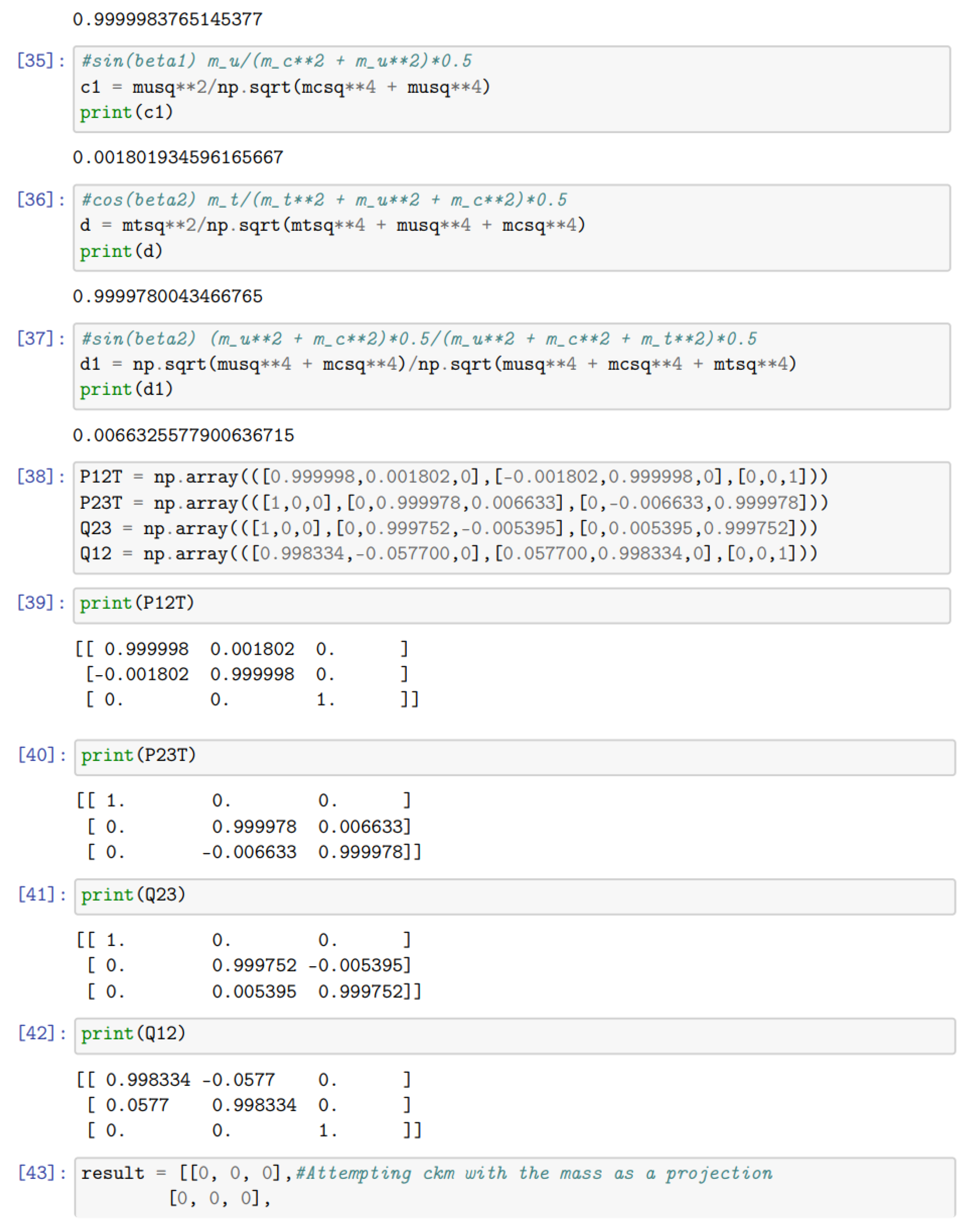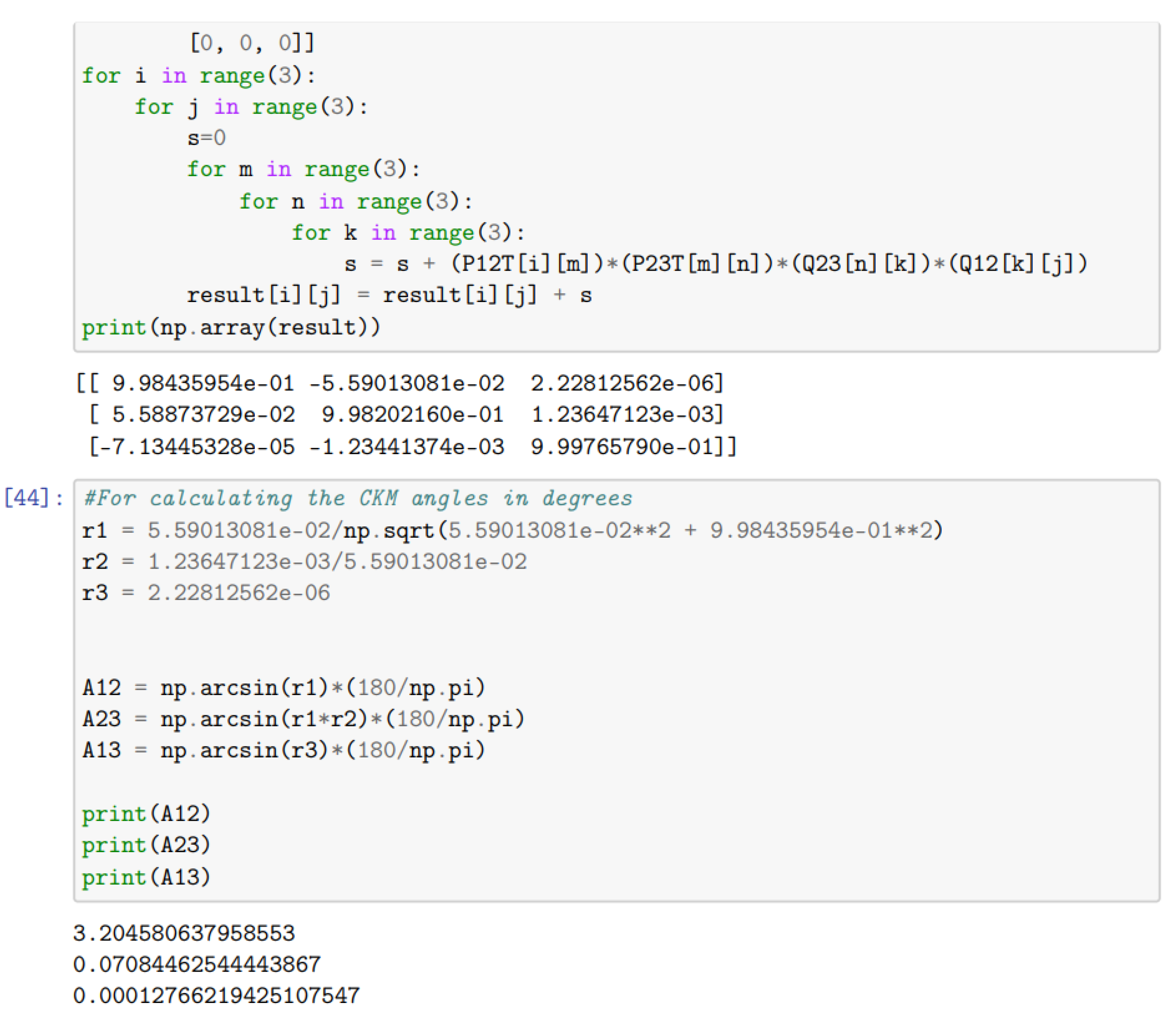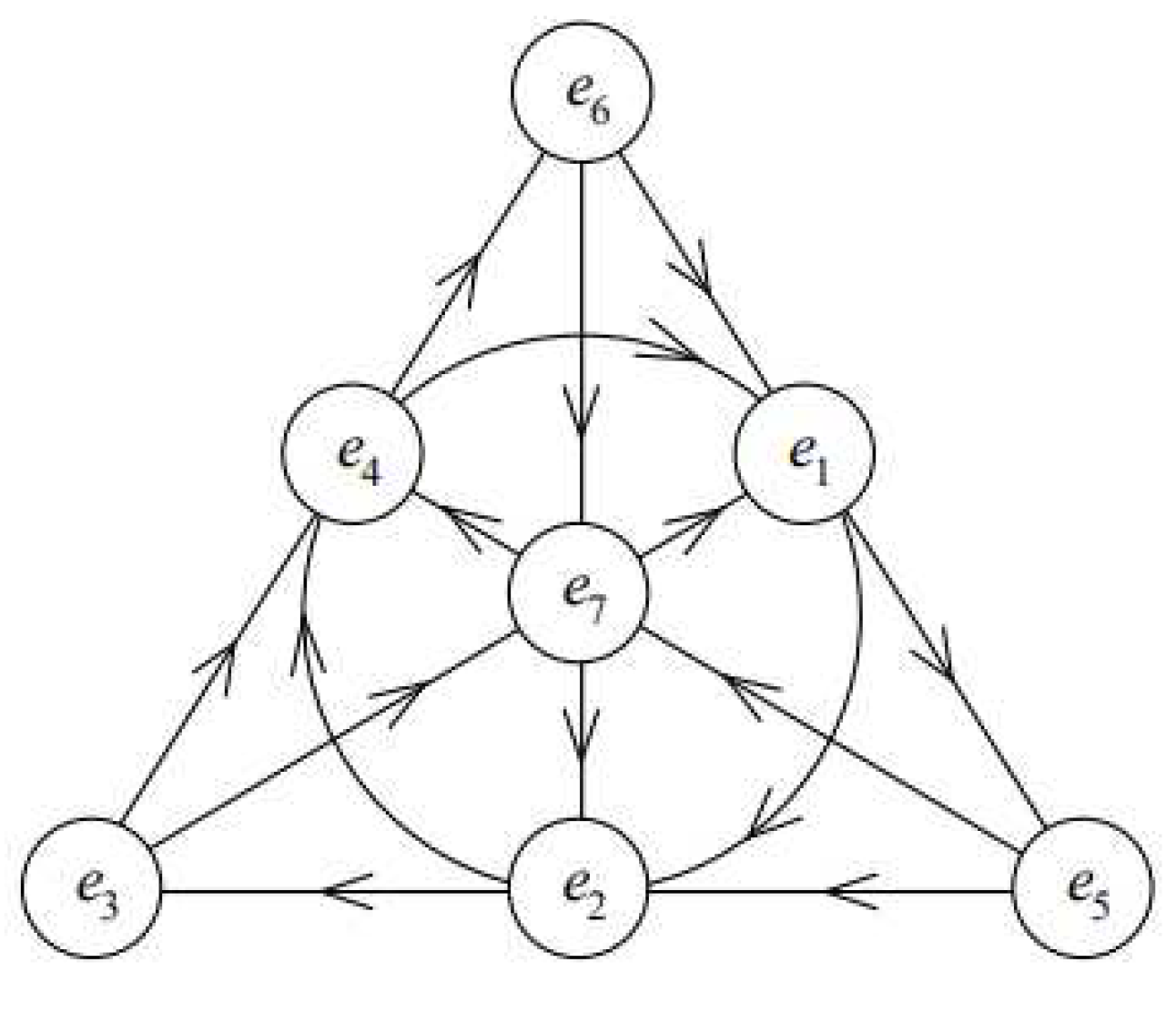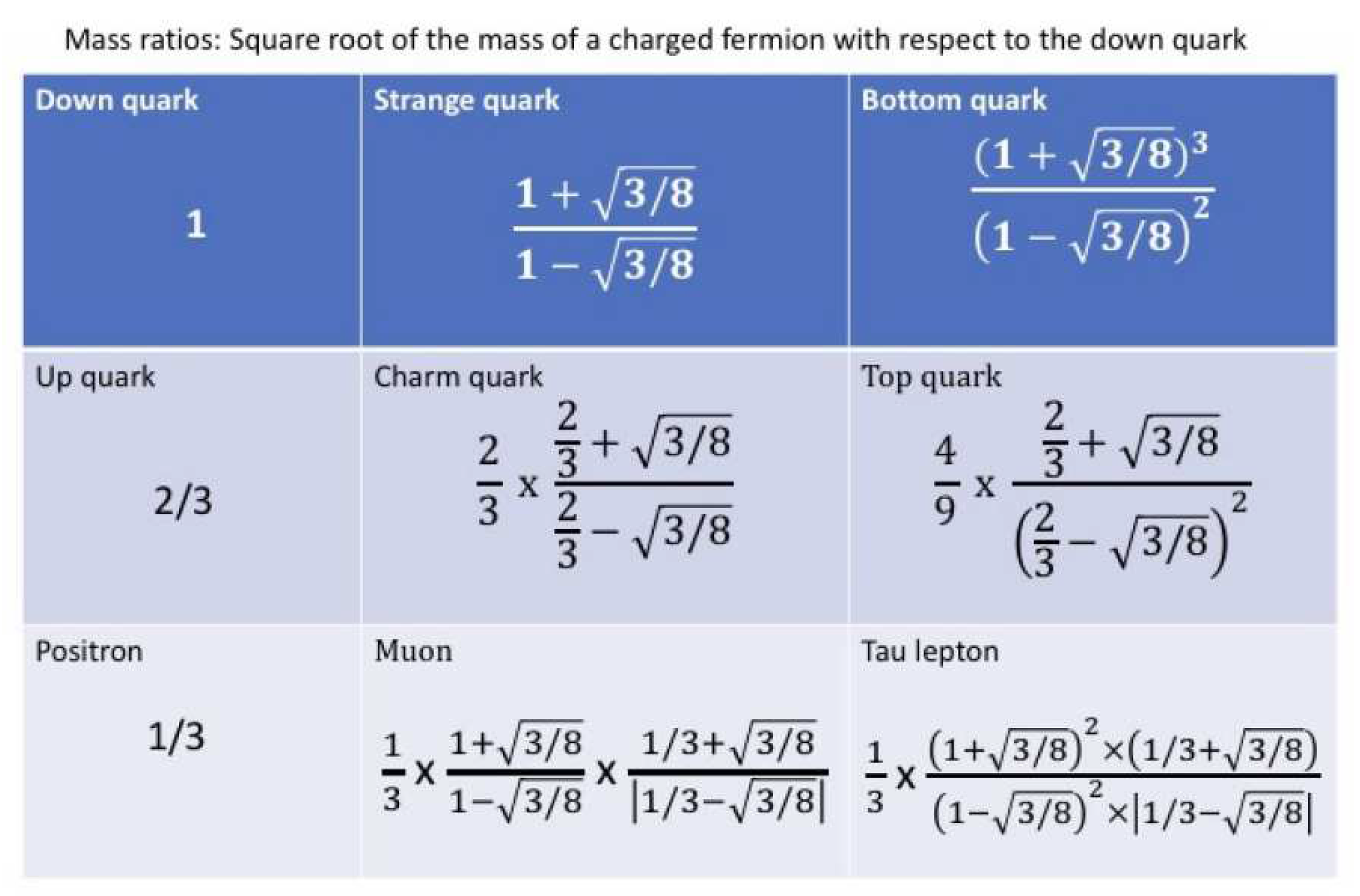As is evident from the analysis in the previous sections, the complex Clifford algebra
is one of great significance. It is the algebra of unification of the standard model with gravitation, via a left-right symmetric extension of the standard model. We also note that
has dimension 512, and its irrep is
matrices with complex number entries. If we assume the diagonal entries of these matrices to be real, their dimensionality is reduced to
, which is precisely the dimension of the
symmetry group
proposed by us earlier for unification [
6]. Hence there is consistency between
symmetry and the algebra
vis a vis unification. Prior to left-right symmetry breaking which breaks unification in this theory, the coupling constant is simply unity, and the role of the emergent
charge is played by this coupling constant divided by 3. Thus the fundamental entities prior to symmetry breaking are lepto-quark states which all have an associated charge
: these are neither bosonic nor fermionic in nature, and the charge value
is evident when one finds the eigenmatrices corresponding to the Jordan eigenvalues in the exceptional Jordan eigenvalue problem. For these eigenmatrices see the Appendix in [
9]. The neutrino family, the up quark family, the down quark family and the electron family, all are expressed as different superpositions of three basis states which all have an associated charge
. This means that the left-chiral families are electric charge eigenstates expressed as superposition of pre-unification basis states, and right-chiral families are square-root mass eigenstates expressed as superposition of pre-unification basis states. This fact permits electric charge eigenstates to be expressed as superpositions of square-root mass eigenstates which in turn allows mass ratios to be determined theoretically.
We recall from above that the unification algebra
is written as a direct sum of two copies of
. On the other hand
can also be written as
. This last expression has profound implications for our understanding of space-time structure in quantum field theory. Recall that each of the two
represents one generation of standard model chiral quarks and leptons; the first
for left-chiral particles and the second
for right-chiral particles. In so far as the
are concerned, the second
(associated with right chiral fermions) is used to generate the Lorentz algebra
of 4D space-time (via complex quaternions with one quaternionic imaginary kept fixed), which includes the Lorentz boosts and the three-dimensional
rotations. Gauging of this
symmetry can be used to achieve Einstein’s general relativity on a 4D space-time manifold [
30]. As for the first
, the one associated with left-chiral fermions, the
rotations describe weak isospin. However, undoubtedly, this
has its own set of Lorentz boosts, which along with the weak isospin rotations generate a second 4D spacetime algebra
distinct from the first, familiar 4D spacetime. In spite of its counterintuitive nature this second spacetime is also an element of physical reality, and there is definitive evidence for it in our earlier work [
7,
11,
12]. In this second space-time, distances are at most of the order of the range of the weak force, and only microscopic quantum systems access this second space-time. Classical systems do not access it - their penetration depth into this space-time is much less than one Planck length. Our universe thus has two 4D space-times, which have resulted from the symmetry breaking of a 6D space-time, consistent with the equivalence
. See also [
31,
32,
33,
34]. The second space-time also obeys the laws of special relativity, and has a causal light-cone structure. A quantum system travels from a space-time point
A to another space-time point
B through both space-times, but gets to
B much faster through the second space-time, on a time scale of the order
s where
cm is the range of the weak force. This is true even if
B is located billions of light years away from
A, and this offers a convincing resolution of the EPR paradox as to how quantum influences manage to arise nonlocally. These influences are local through the second space-time. In spirit our resolution could be compared to the ER=EPR proposal, but unlike the latter, our resolution has a sound mathematical basis. Moreover our resolution was not invented with the express purpose of understanding quantum nonlocality but is an indirect implication of the algebraic unification of standard model with gravitation. The weak force is seen as the geometry of this second space-time.
